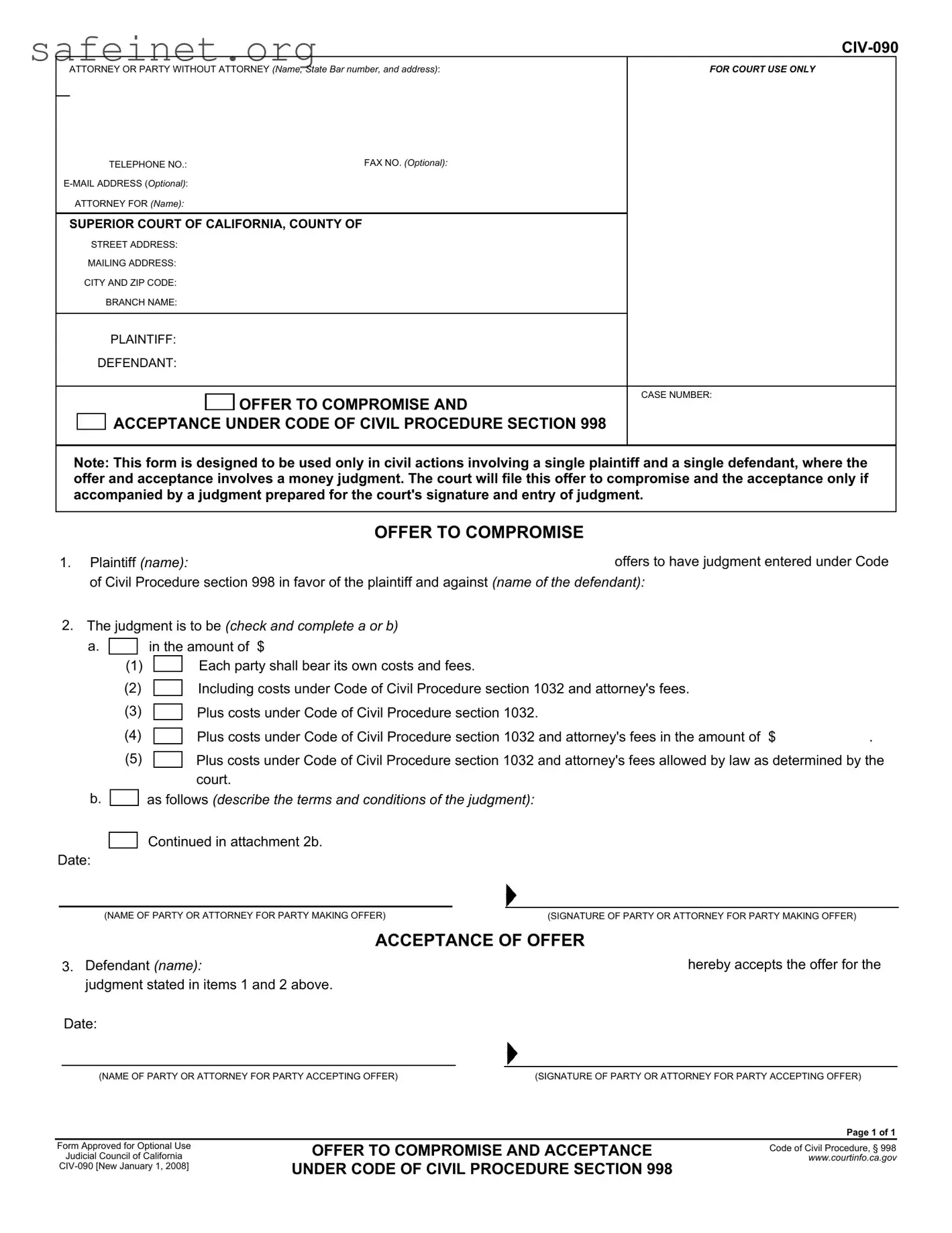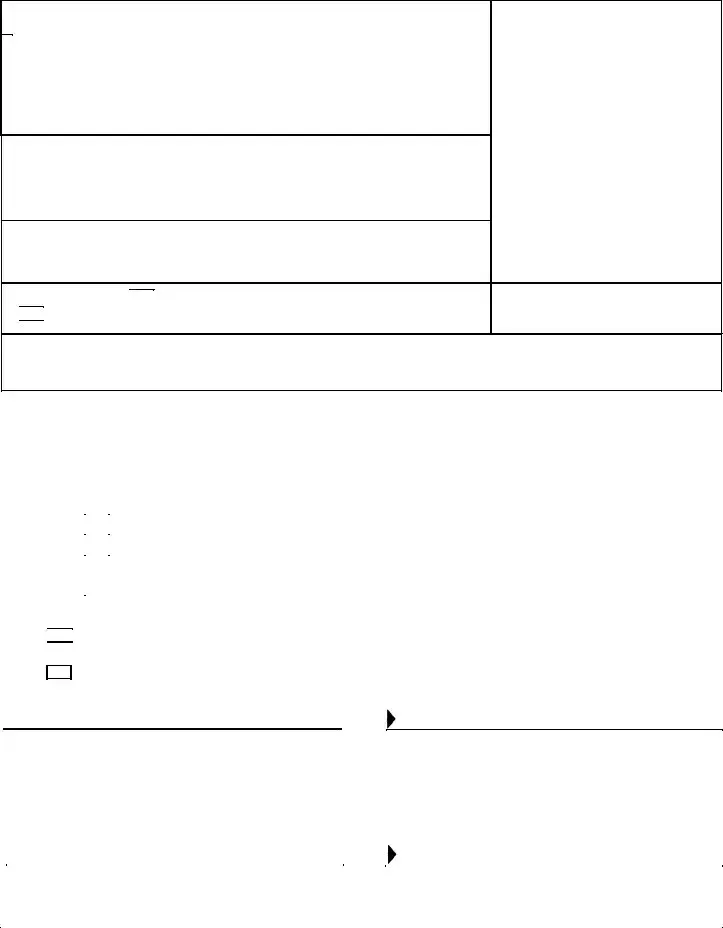What is the purpose of the Civ 090 form?
The Civ 090 form, known as the Offer to Compromise and Acceptance under Code of Civil Procedure Section 998, serves an essential role in civil litigation. It allows a plaintiff to propose a settlement to a defendant, facilitating a resolution to disputes without the need for prolonged court battles. This form is specifically designed for cases with a single plaintiff and a single defendant, focusing primarily on monetary judgments. Its goal is to encourage settlements by detailing the terms under which the parties agree to resolve their case.
Who can use the Civ 090 form?
This form can be used by any party involved in a civil case, provided they are the sole plaintiff or defendant. It is particularly beneficial for attorneys representing clients and individuals who are self-represented, as it outlines a clear path for negotiating and finalizing settlements. However, it’s important to note that the form is suited for cases involving monetary judgments only.
What information is required to complete the Civ 090 form?
To complete the Civ 090 form, several key pieces of information must be provided. Both the plaintiff and defendant's names must be included, along with their contact details. The form requires an offer amount, which may include additional compensation for costs and fees under applicable laws. Detailed terms and conditions of the proposed judgment may also need to be attached if they are complex or extensive.
How does the acceptance process work?
The acceptance process is straightforward. Once the plaintiff submits an offer using the Civ 090 form, the defendant can accept it by signing the document. Importantly, the defendant must sign and date the acceptance portion of the form. This acceptance must align with what was proposed by the plaintiff for it to be legally binding. Once executed, the court will file the accepted offer along with a judgment prepared for the court's signature.
What happens if the defendant does not accept the offer?
If the defendant chooses not to accept the offer, the case will continue as normal. The plaintiff may proceed with their claims in court. During a trial, evidence and arguments will be presented, and a judge or jury will ultimately make a decision. It’s worth mentioning that failing to accept a reasonable settlement may have implications for costs later on, especially if the plaintiff is awarded more than the original offer during trial.
Can additional terms be included with the Civ 090 form?
Yes, additional terms can and should be included if necessary. The Civ 090 form has space for detailing specific conditions or requirements related to the proposed judgment. Including these terms helps ensure that both parties understand the complete scope of the agreement. If the terms exceed the form's space, an attachment can be provided, clearly outlining all relevant details.
What should parties be aware of before submitting the Civ 090 form?
Parties should consider the implications of the offer they are making and accepting. It is crucial to understand the legal ramifications of the judgment and how it aligns with their overall strategy in the case. Additionally, both parties may want to seek legal counsel to ensure that they are making informed decisions and that all details on the form are accurate and comprehensive. Settling may be beneficial, but both sides should feel confident in the terms they are agreeing to.
How does the filing of the Civ 090 form impact the court process?
Filing the Civ 090 form with the court initiates a formal record of the offer and acceptance, which can streamline the process for obtaining a judgment. The court will only accept this form if it is accompanied by a judgment that is prepared for entry. This can save time for both the court and the parties involved, potentially leading to quicker resolutions in their legal matters.
Where can I find more information about the Civ 090 form?
More information about the Civ 090 form can be found on the California Courts' official website. This site provides resources related to court forms, as well as guidance on procedural matters in civil cases. Additionally, if further assistance is required, consulting with a legal professional can provide clarity and context to the use of this form in specific situations.





 OFFER TO COMPROMISE AND
OFFER TO COMPROMISE AND


 ACCEPTANCE UNDER CODE OF CIVIL PROCEDURE SECTION 998
ACCEPTANCE UNDER CODE OF CIVIL PROCEDURE SECTION 998


